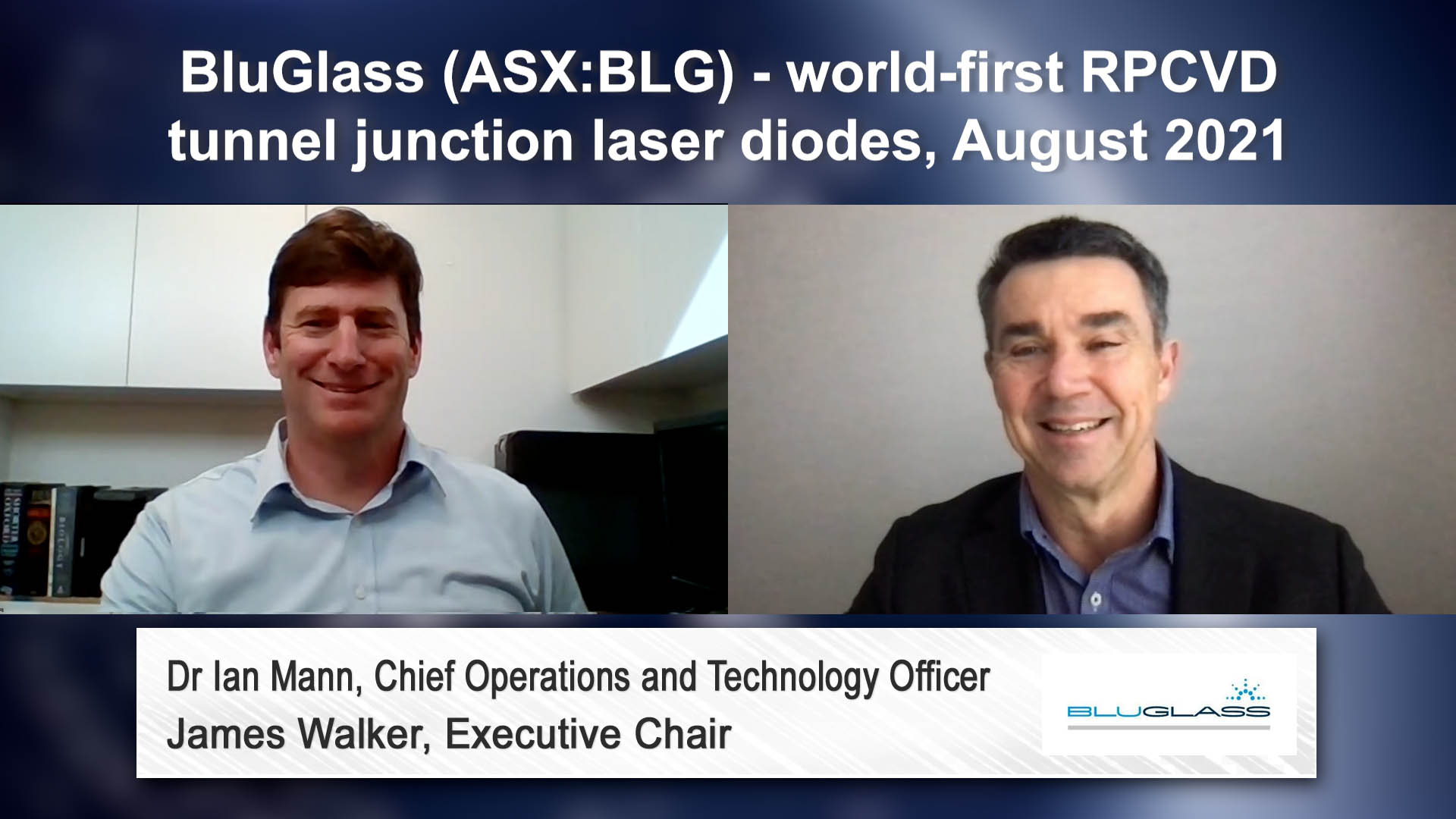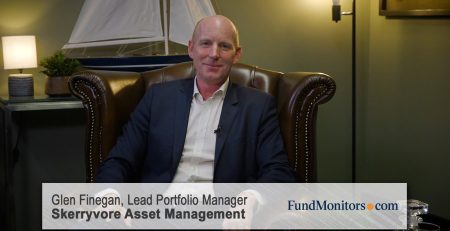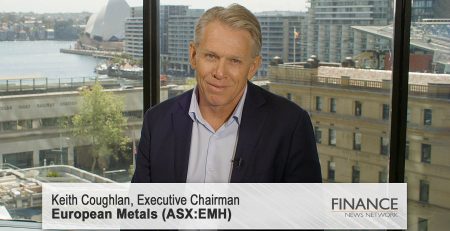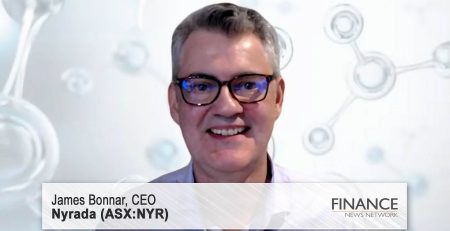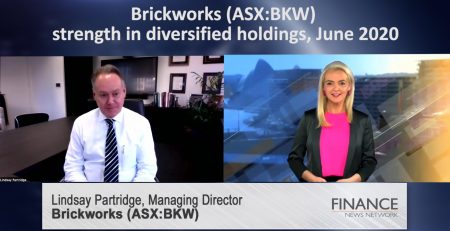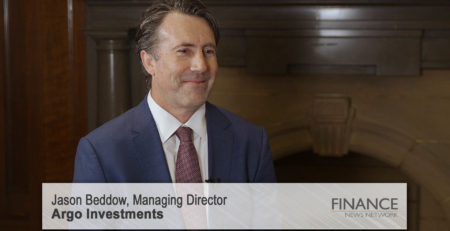BluGlass (ASX:BLG) demonstrates world-first RPCVD tunnel junction laser diodes
BluGlass Limited (ASX:BLG) Executive Chair, James Walker and Chief Technology and Operations Officer, Dr Ian Mann discuss the company’s world-first demonstration of working tunnel junction laser diodes created using remote plasma chemical vapour deposition (RPCVD) technology.
Lauren Evans: Hi. This is Lauren Evans for the Finance News Network. Joining me from BluGlass (ASX:BLG) is Executive Chair James Walker, and Chief Technology and Operations Officer Dr Ian Mann. James and Ian, welcome back.
Dr Ian Mann: Thank you.
James Walker: Great, thank you.
Lauren Evans: Great to have you today. BluGlass has announced a successful demonstration of RPCVD tunnel junction laser diodes. Congratulations on the achievement of this important milestone. First to you, Ian, can you tell us more about what these laser diodes are?
Dr Ian Mann: Yeah. BluGlass has recently just demonstrated our first lasers using our unique design with the low-temperature RPCVD technology. Actually, this is highly relevant for the industry at large because the industry is really looking for performance enhancements on things like overall brightness of lasers, the efficiency of lasers, and even extending the wavelength range. And what we've achieved is actually replacing a certain layer of laser diode structure that actually leads to lower performance. And we've enabled this using the tunnel junction technology, and this new design we call our dual n-wave laser diode design. Now, these initial samples were done under conditions we call before packaging and before coding, but the fundamental lasing behaviour that was observed, really we don't expect to change after further processing, and this is a fantastic first result for this first iteration.
Lauren Evans: Can you explain how a dual n-wave diode differs from a standard laser diode, and what has this been designed to do?
Dr Ian Mann: The standard laser diode currently being used is really only about 45 to 50 per cent efficient. And about 50 per cent of the energy that goes into driving a laser gets actually turned into heat because of this inefficiency. And, really, this is generated with a resistive layer within the laser diode structure, whereas the BluGlass approach with RPCVD actually replaces the resistive p-type layer to improve that electrical performance of the laser diode. Now, when we eliminate this particular layer, which we call the p-type material, that allows or enables this dual n-wave design, but in order to implement that, we actually have to use our RPCVD tunnel junction. So, the combination of the n-type being less resistive that we can implement with our tunnel junction leads to this overhaul of performance improvement.
Lauren Evans: Why isn't this more efficient laser diode design common in the industry today?
Dr Ian Mann: The unique aspect of the RPCVD design is that when we grow p-type material with RPCVD, we call it active as grown. What that means is that when we grow the p-type material, it's already functional or already activated. Whereas when you use MOCVD to grow p-type material, it comes in a non-functional form, which we call passivated. It actually needs a completely separate step to activate it. But importantly, when we want to implement our dual n-wave design, we actually have to grow on top of that p-type material. Now, in MOCVD, when you grow on top, you actually render the structure underneath, the p-type material underneath, as non-functional. This is a real distinctive advantage that we want to try and exploit, certainly for some high power application.
Lauren Evans: Can you tell us a little about what these high-power and high-efficiency lasers will be used for commercially in the future?
Dr Ian Mann: We're targeting, with the RPCVD in particular, the higher-power applications. So, in particular, 450 nanometer, which is blue, and also longer wavelengths, such as green. These applications for things like industrial welding or display projections that require the high power really lend themselves well to the RPCVD approach. One of the technical reasons is that when we grow the p-type material with standard MOCVD technology, because it's grown at high temperature, it actually has a negative effect on the underlying layers. Whereas when we grow with RPCVD these p-type or n-type materials with low temperature, there's no adverse effects of the underlying layers. All of the technologies that we've been developing over the years with RPCVD, we really have patented all of this approach, and it also is applicable to all the laser diode activity that we've just recently demonstrated.
James Walker: In additionally to that, Lauren, I would like to say that the 450 nanometer laser diode that we've just announced with the RPCVD tunnel junction, as Ian said, will be used in 3D printing, industrial welding and displays, but this is just not standard industrial welding and standard 3D printing. This is the ultra high precision being used in really high-niche market applications. So, for example, it's going to be used in IoT sensors and such applications in the printing space for high-end aviation components and medical devices. And the 450, as Ian said, is just the beginning of the first products we produce in this area.
Lauren Evans: So, BluGlass recently raised $8.4 million in an oversubscribed rights issue and placements to resolve reliability and fund the business to commercial orders. Can you give us an update on the reliability challenge and product development?
James Walker: Yeah. So, first of all, once again, I'd like to thank the shareholders for their ongoing support. It's only with their support in that rights issue and the placement that we've just made that we're able to make these types of developments and announcements that we made yesterday on having our first-ever RPCVD tunnel junction laser diode. Critically important that we got to this stage, and we could only have done it with our shareholders. So, what those funds allow us to do, they allow us to continue to resolve the reliability issue and to continue to work on the series of products that we're going to launch over the next 12 months.
Lauren Evans: The last question from me today, following your successful capital raise and your technology breakthrough, what can investors look forward to in the remaining calendar year?
James Walker: We are continuing to search for a laser diode industry experienced executive and also to bolster the current technical team with people from the industry. So, that's ongoing and I'm hopeful that we should be able to make an announcement on that fairly soon. The rest of the year is continuing to focus on solving the reliability issues, working with our partners to get that resolved, and then launch our series of products. We have customers waiting for us to deliver those products, so once we've solved the reliability issues, we'll be able to sell and generate revenue fairly quickly. It's worth noting, though, that at the Silverwater facility, we have significant capacity on the epitaxy component of the laser diode. So, once we solve this issue, we'll be able to scale up quite quickly to deliver what we think will be the demand for these products over the coming years. We are in a good position to capitalise on this opportunity.
Lauren Evans: Well, James Walker and Dr Ian Mann, thanks for the update today. It's been much appreciated.
Dr Ian Mann: Thank you.
James Walker: Great, thank you.
Ends
Copyright 2021 – Finance News Network
Source: Finance News Network

